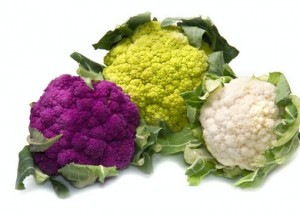
Although the thought of eating anything fermented may not sound overly appetizing, it is really, really healthy. Fermented vegetables, made with organic, unpeeled veggies contain a ton of health promoting vitamins, minerals, fiber and enzymes.
Fermentation preserves food and enhances its nutrient content while making minerals more easily absorbed. Beneficial B vitamins and enzymes necessary for proper digestion are also created during the culturing process.
Fermentation is basically a process whereby bacteria, yeasts or fungi help break food into less complicated parts known as ‘live food’ or ‘living food’. Culturing continues while the food is in storage, further enhancing both flavor and nutrient content.
Fermented veggies have a naturally tart taste, mostly due to the lactic acid. Cultured vegetables are a great addition to a low carbohydrate diet – sugars and carbohydrates have been broken down and used for the fermentation process.
While most vegetables can be fermented, it is best to use local, organic, fresh produce. If you purchase it when it is fresh and ferment it, you will have excellent nutrition all year.
You don’t have to ferment just one food at a time, try mixing them together. Some of the best tasting and most nutritious cultured vegetables are mixtures. A popular blend is beets, onion, garlic, leeks, seaweed and hot peppers. You can make what is known as Kimchi by combining cabbage, red chili peppers, garlic, ginger and onion.
Equipment Needed
The basic equipment needed to ferment vegetables includes the following:
- Sharp knife or food processor
- Cutting board
- Meat pounder
- Large bowl or container for pounding
- Sea salt
- Starter culture – kefir grains, whey or frozen and dried culture
- Filtered water
- Wide-mouth mason jar
How to Ferment Vegetables
- Wash all raw vegetables using filtered water.
- Cut up all the vegetables except the hot peppers.
- Place all of the vegetables in a bowl and squeeze them using your hands or with a meat hammer to release all of the juices.
- Add sea salt to taste.
- Add in a starter culture such as whey, kefir grains or a freeze-dried culture.
- Mix in the hot peppers without any seeds, be careful not to get any of the juice on your hands as it will burn the skin.
- Put the mixture in a glass mason jar leaving at least 3 inches at the top.
- Push the vegetables down until the juice rises to the top.
- Cover the vegetables with a lid.
- Put the jar on your counter or in another warm spot. Take a taste test each day of the ferment and be sure that you are keeping the vegetables covered with liquid. When it starts to taste sort of tangy, move it to the refrigerator.
 When is it Ready?
When is it Ready?
The amount of time that it takes before the ferment is considered “done” depends on several factors and can generally range from 2 to 21 days. If you use a starter culture, the process will be quicker. Be sure to follow the directions that come with your starter culture to allow an appropriate amount of time for bacteria to develop.
If you use a lot of salt or place the mixture in a cool location, the process will slow down. A warm room will speed the process up. Use taste as a way to assess how your ferment is coming along.
Storing Your Vegetables
Store your fermented vegetables in a root cellar, or a refrigerator for 4 to 6 weeks to improve flavor. The vegetables continue to ferment at a very slow rate in cold storage.
If your ferment contains 1% to 2% salt, it will keep for at least 4 to 9 months in the refrigerator. A 2% salt version will keep in a dark, cool area for at least 3 months if the vegetables are kept under their liquid.

